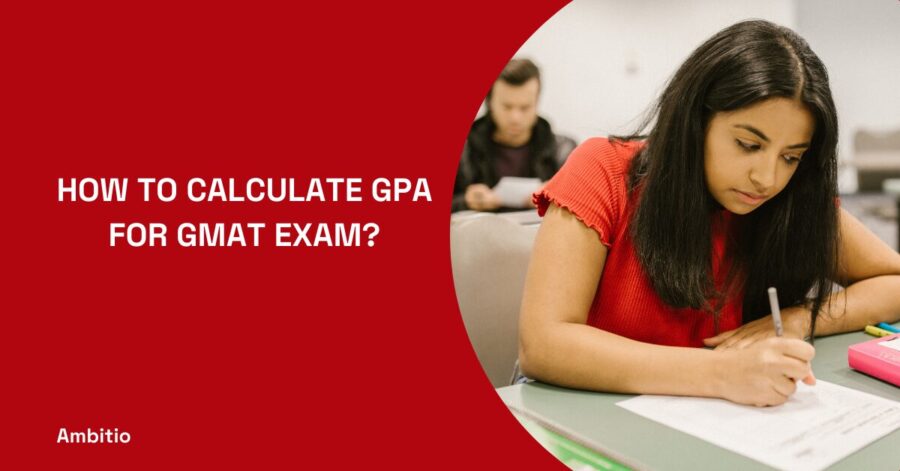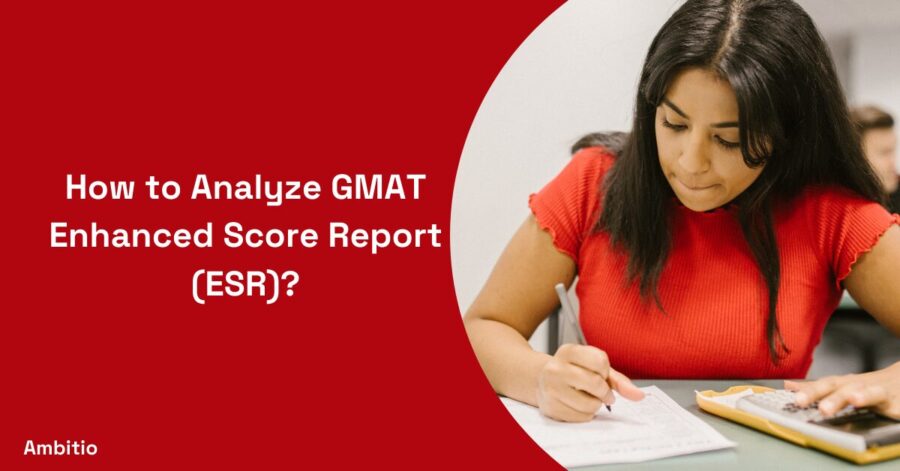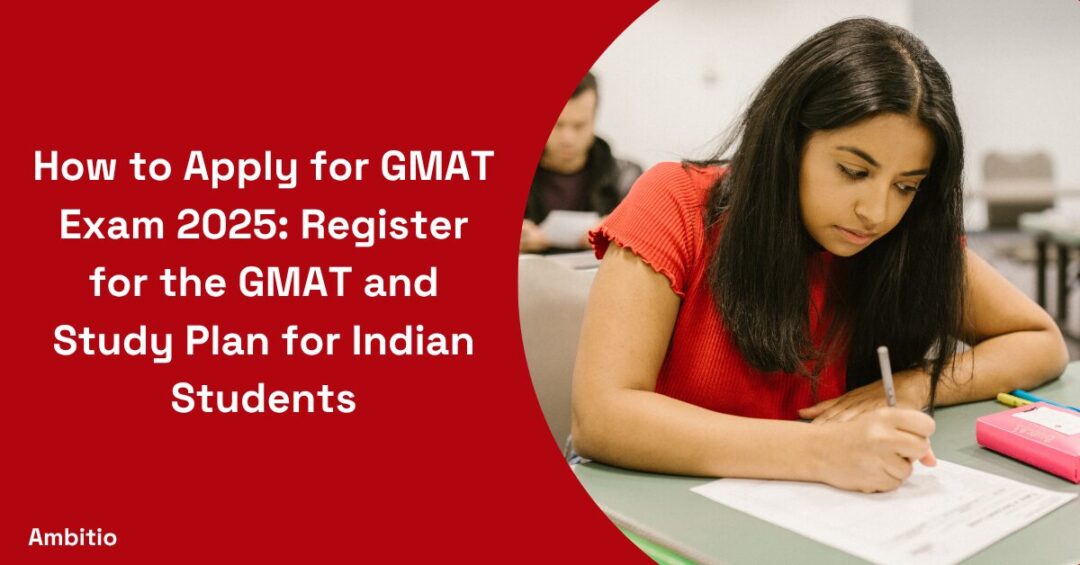11 December 2024
7 minutes read
GMAT Number of Questions – Latest GMAT Exam Pattern

Key Takeaways
- Consistent practice with official GMAT questions helps build accuracy and confidence.
- Leverage the adaptive scoring algorithm to maximize your score by focusing on correctly answering difficult questions.
- Rely on GMAC’s study materials for targeted and effective preparation.
GMAT is a standardized exam designed to assess the analytical, quantitative, and verbal skills of candidates aspiring to pursue graduate management programs, such as an MBA. Administered by the Graduate Management Admission Council (GMAC), the GMAT serves as a crucial benchmark for business schools worldwide. In this blog, we will delve into the number of questions in each section of the GMAT, explore the exam structure, and provide preparation strategies to help you achieve a high score.
GMAT Focus Edition – Overview
Here’s the updated overview table for the GMAT Focus Edition
| Exam Name | GMAT Focus Edition |
|---|---|
| Conducted by | GMAC |
| Official Website | https://www.mba.com |
| Commonly Taken for | MBA or PG Business Courses |
| Accepted in | India & Abroad |
| Types of Questions | Multiple Choice Questions |
| GMAT Exam Fee | USD 300 (online) , USD 275 (test centre) + taxes Approx. ₹24,600 (online) , ₹22,500 (test centre) |
| Sections of Testing | 3 ( Quantitative Reasoning , Verbal Reasoning , Data Insights) |
| Scoring Scale | 205 – 805 |
| Overall Duration of Exam | 150 minutes |
| Sectional Duration | 45 minutes per section |
GMAT Total Questions – Exam Pattern
Here’s a table outlining the latest GMAT format .
| Section | Duration | Total Number of Questions | Score Range |
|---|---|---|---|
| Quantitative Reasoning | 45 minutes | 21 | 60-90 |
| Verbal Reasoning | 45 minutes | 23 | 60-90 |
| Data Insights | 45 minutes | 20 | 60-90 |
GMAT Section Order
Here’s a table outlining the six section order options for the GMAT Focus Edition:
| Option | First Section | Second Section | Third Section |
|---|---|---|---|
| 1 | Quantitative Reasoning | Verbal Reasoning | Data Insights |
| 2 | Quantitative Reasoning | Data Insights | Verbal Reasoning |
| 3 | Verbal Reasoning | Quantitative Reasoning | Data Insights |
| 4 | Verbal Reasoning | Data Insights | Quantitative Reasoning |
| 5 | Data Insights | Quantitative Reasoning | Verbal Reasoning |
| 6 | Data Insights | Verbal Reasoning | Quantitative Reasoning |
These options provide flexibility for test-takers to choose the sequence that aligns best with their strengths and preferences.
What types of questions are on the GMAT ?
The GMAT Focus Edition pattern reflects the latest GMAT exam structure. There are 64 questions in total on the GMAT Focus Edition. The new version of the GMAT includes these sections to provide a comprehensive evaluation of the skills necessary for business school. Know the latest GMAT eligibility criteria before starting your preparation for the exam.
Here’s a table outlining the types of questions on the latest GMAT Focus Edition, including details about each section of the GMAT:
| Section of the GMAT | Types of Questions |
|---|---|
| Quantitative Reasoning Section (Quant) | Problem Solving , Data Sufficiency |
| Verbal Reasoning Section (GMAT Verbal) | Reading Comprehension , Critical Reasoning , Sentence Correction |
| Data Insights Section | Multi-Source Reasoning , Graphics Interpretation , Table Analysis |
How is Quantitative Reasoning score calculated ?

The Quantitative Reasoning score in the GMAT Focus Edition is calculated based on the performance in the quantitative section, which consists of 21 questions. This section, commonly referred to as GMAT Quant, includes problem-solving and data sufficiency questions. Practice free sample GMAT Quant questions to get a good hold of the section . Read the below to know the Quantitative Reasoning score calculation.
Adaptive Scoring Algorithm
The GMAT Quant employs an adaptive scoring algorithm. This means that the difficulty level of the questions adjusts based on the test-taker’s performance. As the exam progresses, correctly answering harder questions results in a higher score.
Scoring Criteria
The exam evaluates both the accuracy of the answers and the difficulty level of the questions answered correctly. Each correct response in the quantitative section contributes to the raw score, with harder questions contributing more points. By understanding the scoring algorithm , you will know how to ace the GMAT Quant section.
Scaled Score
The raw score from the 21 questions in the quantitative section is converted to a scaled score ranging from 60 to 90. This scaled score is used by business schools to assess the applicant’s proficiency in quantitative reasoning, reflecting their mathematical and analytical skills effectively.
How is Verbal Reasoning score calculated ?
The Verbal Reasoning score in the GMAT Focus Edition is calculated based on performance in the verbal sections, which consist of multiple-choice questions. This section is a crucial part of the test, designed to assess reading comprehension, critical reasoning, and sentence correction skills.
Adaptive Scoring Algorithm
Similar to the quantitative section, the Verbal Reasoning section uses an adaptive scoring algorithm. The difficulty of the questions adjusts based on the test-taker’s responses during the exam time. Answering more difficult questions correctly results in a higher score. Thus , GMAT known as a computer adaptive test.
Scoring Criteria
The exam time for the verbal sections is 45 minutes, during which test-takers must complete multiple-choice questions. The exam evaluates both the accuracy of the answers and the difficulty level of the questions answered correctly. Each correct answer contributes to the raw score, with harder questions earning more points.
Scaled Score
The raw score from the verbal sections is converted to a scaled score ranging from 60 to 90. This scaled score reflects the test-taker’s proficiency in verbal reasoning, helping business schools assess the applicant’s ability to understand and analyse written material effectively.
How is Data Insights score calculated ?
The Data Insights score in the GMAT Focus Edition is calculated based on performance in this section, which is one of the three sections in the new GMAT Focus Edition. This section assesses the ability to interpret and analyse data from various sources, including charts, graphs, and tables. By understanding the scoring algorithm, even non-maths background students can take GMAT . Read the below to know the score calculation of the Data Insights section .
Adaptive Scoring Algorithm
Similar to the other sections, the Data Insights section uses an adaptive scoring algorithm. As you take the GMAT, the level of questions adjusts based on your responses. Correctly answering more difficult questions results in a higher score, reflecting your proficiency in data analysis.
Scoring Criteria
During your GMAT prep, focus on multi-source reasoning, graphics interpretation, and table analysis. The exam evaluates both the accuracy of your answers and the difficulty level of questions answered correctly. Each correct response adds to the raw score, with harder questions contributing more points.
Scaled Score
The raw score from the Data Insights section is converted to a scaled score ranging from 60 to 90. This scaled score helps business schools assess your ability to analyse and interpret data effectively, which is critical for success in business programs.
GMAT Solved Questions
Remember, the key to success on the GMAT is to practice regularly with official GMAT math and verbal practice questions. Take the GMAT exam with confidence by mastering the objective and subjective questions in the math and verbal sections. With consistent practice, one can answer all questions accurately and move on to the next section of the test.
GMAT Math Section
Question:
A certain company has 100 employees. The ratio of men to women is 3:2. How many more men than women are there in the company?
Solution:
Let’s break this down step-by-step:
- Total employees = 100
- Ratio of men to women = 3:2
- Let’s assign variables:
- Let x = number of women
- Then 3x = number of men (since ratio is 3:2)
- We know that x + 3x = 100 (total employees)
- Solving for x: 4x = 100, x = 25
- So there are 25 women
- Number of men = 3x = 3(25) = 75
- Difference between men and women = 75 – 25 = 50
Answer: There are 50 more men than women in the company.
GMAT Verbal Section
Question:
The passage suggests that the author believes which of the following about the relationship between the two artists?
Passage:
The two artists, though contemporaries, had very different styles. Artist A favoured bold, expressive brushstrokes and vibrant colours, while Artist B preferred a more muted palette and delicate, precise lines. Despite these differences, both artists were masters of their craft and made significant contributions to the art world in their own unique ways.
Options:
(A) The artists were rivals who competed for recognition.
(B) The artists were friends who influenced each other’s work.
(C) The artists were indifferent to each other’s work.
(D) The artists respected each other’s talents even though their styles differed.
(E) The artists were unaware of each other’s existence.
Answer: (D) The artists respected each other’s talents even though their styles differed. The passage states that the two artists had very different styles, but both were “masters of their craft and made significant contributions to the art world in their own unique ways.” This suggests that despite their stylistic differences, the artists respected each other’s talents and accomplishments. The other options are not supported by the passage. There is no mention of rivalry, friendship, indifference, or unawareness between the artists.
Preparation Strategies To Improve Your GMAT score
To improve your GMAT score percentile , start by thoroughly understanding the syllabus. Familiarize yourself with the quant and verbal sections, as well as the reasoning section, which consists of both integrated reasoning and data insights.
- Create a Study Plan: Develop a schedule that covers all topics in the current version of the GMAT. Allocate more time to areas where you are weak.
- Practice Regularly: Use GMAT practice tests to simulate the exam environment. Focus on answering each question accurately before moving to the next question.
- Review Fundamentals: Ensure you have a strong grasp of basic concepts in math and English, as these are crucial for the quant and verbal sections.
- Analyse Mistakes: After each practice test, review your answers to understand your mistakes. This will help you avoid similar errors in the future.
- Use Official Resources: Study materials from GMAC, the organization that administers the GMAT, are tailored to the exam and offer reliable practice.
Conclusion
Know the lifetime limits of GMAT. By understanding the exam structure, familiarizing yourself with the types of questions in each section, and following effective preparation strategies, you can improve your GMAT score and enhance your chances of admission to top business schools.
Maximize your GMAT potential and aim for the top with Ambitio’s comprehensive prep tools. Our approach focuses on enhancing your strengths and addressing your weaknesses, providing you with the skills and confidence needed to score higher and reach your MBA goals.
FAQs
Is the number of questions the same in every GMAT section?
No, each section has a different number of questions: Quantitative Reasoning (21), Verbal Reasoning (23), and Data Insights (20).
How is the difficulty level of GMAT questions determined?
The GMAT uses an adaptive scoring algorithm that adjusts the difficulty level of questions based on the test-taker’s performance.
What types of questions are included in the GMAT Data Insights section?
The Data Insights section comprises Multi-Source Reasoning, Graphics Interpretation, and Table Analysis questions.
How long do you have to complete each section of the GMAT?
Each section of the GMAT is 45 minutes long.
Is there a difference in question types between the online GMAT and the test centre GMAT?
No, the types of questions and the structure remain the same for both the online and test centre versions of the GMAT.
How do I determine which GMAT section order is best for me?
Choose the section order that aligns with your strengths and allows you to perform your best on each section.

You can study at top universities worldwide!
Get expert tips and tricks to get into top universities with a free expert session.
Book Your Free 30-Minute Session Now! Book a call now




























